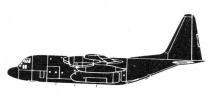Incident Overview

Description
Aeroflot flight 212 to Moscow had to abort the take off from runway 26 Stockholm-Arlanda airport. The aircraft passed the runway end and continued 200 meters to an area where the ground surface slopes to a crossing road. The starbord wing hit and destroyed an ILS/localizer antenna. The captain aborted the take-off when he at speed VR noted , that the control force was abnormally large and the control column could only be pulled back a short distance. As he initiated the take-off abortion he saw that the warning sign “Not ready for start” was flashing. This light flashes. for instance , when the nose wheel steering is in the taxying position or the control system hydraulic booster switches have not been locked in the ON -position. had reached rotation speed when the captain felt firm resistance when trying to lift the nose. The captain decided to abort the takeoff with only about 500 meters of runway left. The Tupolev overran runway 26, struck an ILS localizer antenna and went down a slope. Probable cause (translated from Swedish): The takeoff could not be completed because the crew had not selected the control system’s hydraulic pressure. The aircraft ran off the runway because the required total acceleration braking distance became longer than the available distance – which was 50-60m longer than for start required – due to heavy acceleration during the seconds the captain was required to make the decision to abort the takeoff and due to delayed braking and reverse. Contributing causes of the accident were deficiencies in the crew resource management, especially with regard to execution of the checklist, inappropriate warning system and lack of training of the crew with regard to interrupted takeoff due to other than engine failure.
Primary Cause
Crew resource management deficiencies, specifically related to checklist execution, warning system effectiveness, and crew training regarding interrupted takeoffs.Crew resource management deficiencies, specifically related to checklist execution, warning system effectiveness, and crew training regarding interrupted takeoffs.Share on:





